Solutions
Horse Construction offers full range of structural strengthening materials with technical supports, documentation supports, products supports, project supports.
CFRP
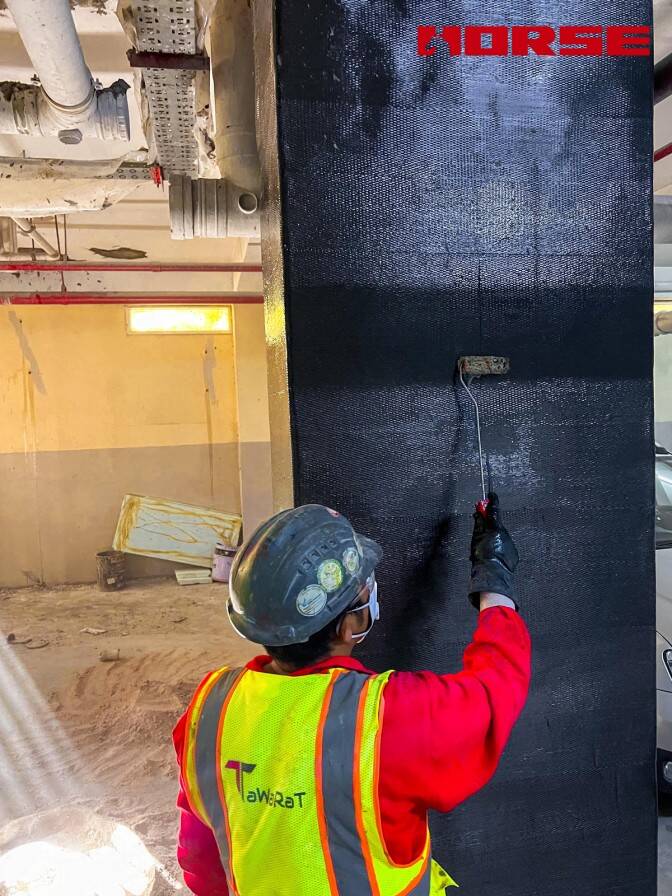
Carbon fiber sheet (CFRP) reinforcement technology is widely used in concrete structure reinforcement due to its advantages such as light weight, high strength and corrosion resistance. However, differentiated bonding schemes must be formulated based on the stress characteristics and reinforcement goals of the component type (beams, columns, slabs, walls) to maximize the material performance.
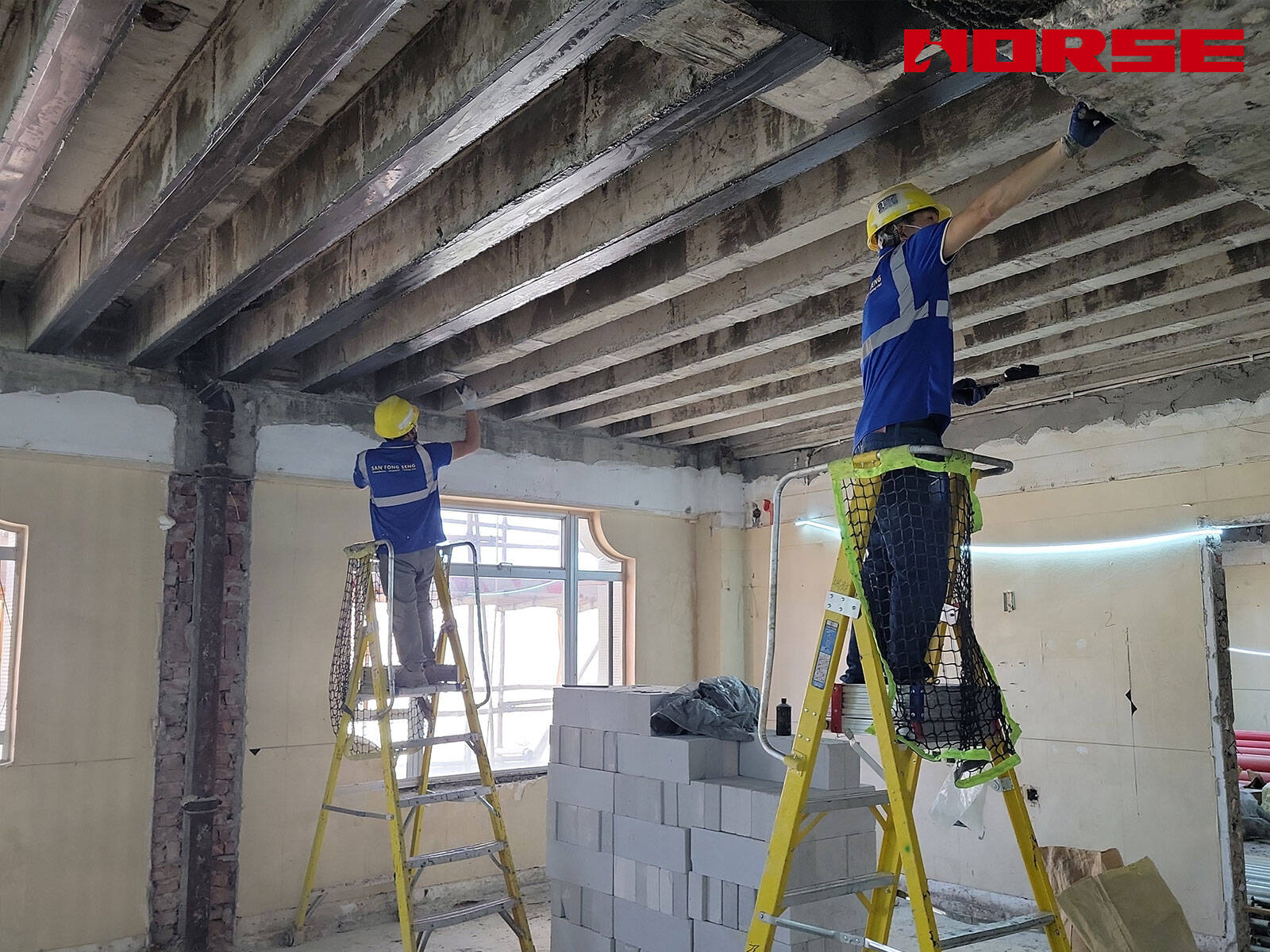
Concrete Beams: Targeted solutions for flexural, shear, and ductility deficiencies.
Beams, as flexural members, are subject to common defects including vertical cracks at midspan (inadequate flexural resistance), diagonal cracks at supports (inadequate shear resistance), and concrete spalling at ends (inadequate ductility). The bonding method should be selected based on the type of defect, while also considering the impact of construction on the surrounding environment (for example, reducing dust and noise when reinforcing existing building beams).
Flexural Reinforcement: Paste along the length of the beam, covering the tension zone.
Paste Direction: The carbon fiber cloth fibers are parallel to the beam axis (along the beam length), directly supplementing the tension in the tension zone at the bottom of the beam, effectively increasing the tensile reinforcement area.
Paste Scope:
Generally, the entire span of the beam is bonded to the bottom. If localized weakness exists (such as a concentrated load), the bond can be extended 200-300mm beyond the weak section to avoid stress concentration.
Support Restraint: If negative bending moment occurs at the beam end (such as tension at the top of a frame beam support), apply a length of carbon cloth 1.5-2 times the beam height near the top support, creating a "bottom + top" bidirectional reinforcement.
Number of Layers: Determined by calculation, typically 1-3 layers are used. (Excessive layers can lead to delamination, requiring U-hoops or battens for reinforcement.)
Typical Applications: Reinforce cracked beams in office building corridors and parking lot driveway beams mid-span.
Shear Reinforcement: Attach the carbon fiber fabric perpendicular to the beam axis, forming a "U-shaped hoop" or "diagonal cloth."
Attachment Direction: The carbon fiber fabric's fibers are oriented perpendicular to the beam axis or at a 45-degree angle (corresponding to the direction of shear force), resisting shear forces by "tightening" the concrete.
Attachment Form:
U-shaped hoop: Attach the fabric around both sides and the bottom of the beam (if there is a floor slab on top, attach it to the bottom of the slab). Spacing is determined based on calculations (usually 100-300mm). This is suitable for most shear reinforcement scenarios.
Diagonal cloth: When the beam is high or shear forces are concentrated, attach the carbon fiber fabric near the support at a 45-degree angle to the beam axis (the length should cover the shear-affected area). Used in conjunction with the U-shaped hoop, it enhances shear resistance.
Technical Points: The U-shaped hoop must cover at least 2/3 of the beam height, and its ends must extend to the beam top or floor slab to prevent detachment.
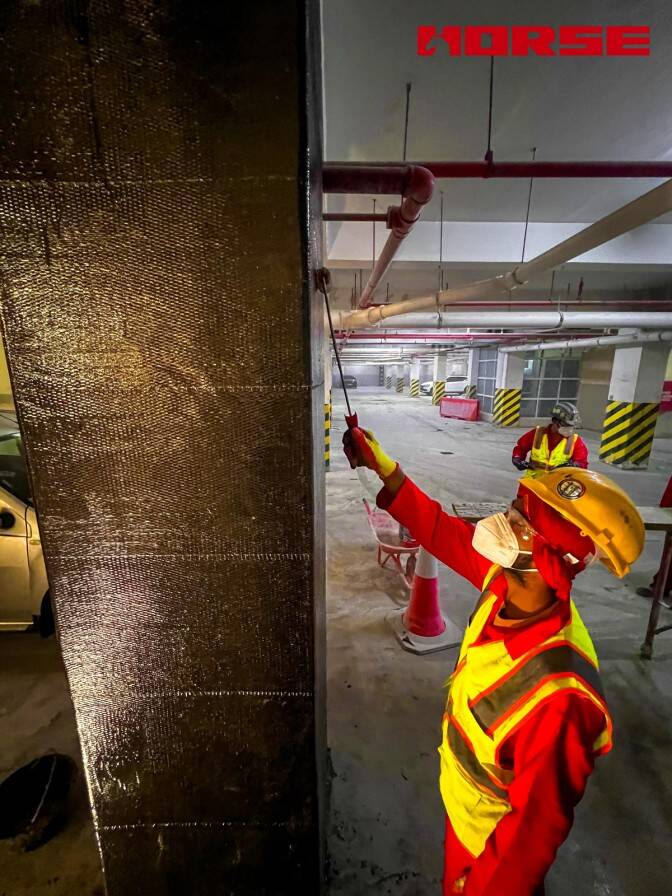
Concrete Columns: Targeting "Axial Compression + Seismic Resistance" with Combined Circumferential and Longitudinal Bonding.
The core requirements for columns are to increase axial compressive bearing capacity (preventing column deformation and cracking) and enhance seismic ductility (resisting shear and torsion under earthquakes). Bonding requires a combination of "circumferential restraint" (similar to stirrups) and "longitudinal reinforcement" (similar to longitudinal reinforcement).
Axial Compression/Seismic Reinforcement: Circumferentially apply or spaced-apart carbon fiber sheets to form a "constraint sleeve."
Paste Direction: The carbon fiber sheeting is oriented perpendicular to the column axis (circumferentially). This "circumferential constraint" limits the lateral expansion of the concrete, thereby increasing its axial compressive strength (similar to the "hoop effect" of concrete-filled steel tube).
Paste Type:
Full-Circumferential Application: Continuous circumferential application along the entire column height (suitable for insufficient full-column bearing capacity), or full application along the upper and lower 1/3 of the column height (for areas of concentrated shear at the column ends).
Spaced Hoops: If only localized restraint is required, circumferential carbon fiber sheets (150-300mm wide) can be applied at intervals of 200-500mm. Spacing must meet seismic code requirements.
Special Case: If the column also has longitudinal cracks (insufficient longitudinal reinforcement), apply one or two layers of longitudinal carbon fiber sheets (with the fibers aligned along the column axis) along the column height before applying the circumferential reinforcement, creating a "longitudinal + circumferential" synergistic reinforcement. Typical scenarios: Parking lot columns and old building frame columns with insufficient bearing capacity need reinforcement.
Torsional Reinforcement: Spiral Bonding to Cover the Torsional Shear Zone
When a column is subject to torque (e.g., due to eccentric loading), carbon fiber sheeting should be applied spirally around the column (with the fibers oriented at 45° to the column axis). The spacing is determined based on torque calculations to ensure coverage of the entire torsional shear zone and resist the shear stresses generated by the torque.
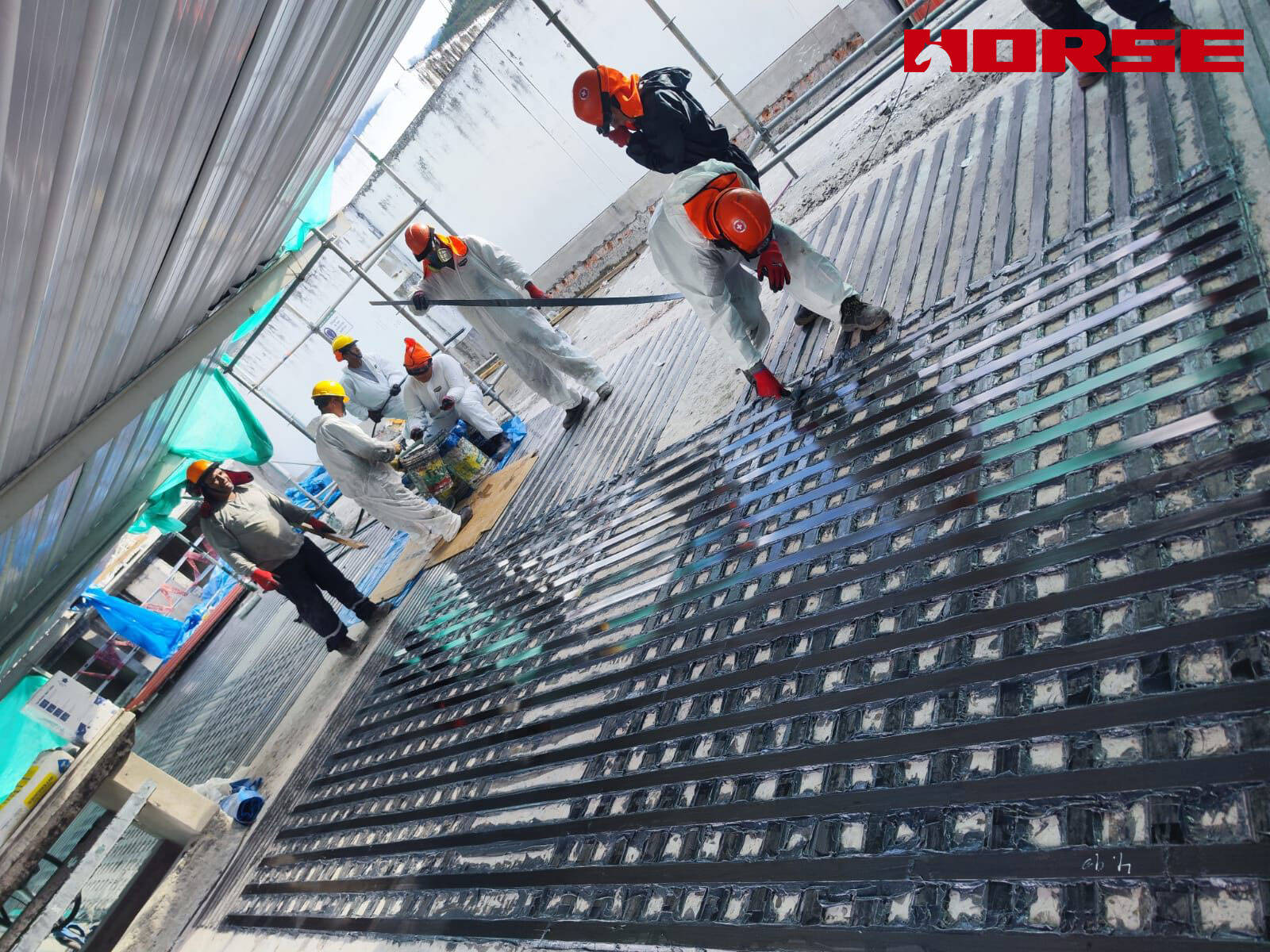
Concrete Slabs: Emphasize "Bending And Cracking Resistance," With Either Full Or Strip-Applied Slabs In Different Areas.
The loads on the slab are similar to those on a two-way beam. Common problems include insufficient mid-span bending resistance (floor cracking) or insufficient negative bending moment at the supports (cracking at the slab/column edges). The adhesive bonding requires a differentiated design based on the load distribution of the slab (one-way slab vs. two-way slab).
One-way slabs (such as corridor and balcony slabs): Paste along the short span.
Paste Direction: The carbon fiber cloth should be parallel to the short span of the slab (the slab is primarily loaded along the short span), supplementing the tension in the bottom tension zone.
Paste Scope:
Mid-span area: Apply full coverage or in strips (strip width 300-600mm, with spacing no greater than the strip width), covering the core tension zone at the mid-span.
Support Negative Bending Moment Area: Apply carbon cloth 1.5-2 times the slab thickness (with the fibers still aligned with the short span) along the length of the support at the slab edge (such as a brick wall support) or column edge to supplement negative bending moment tension.
Two-way slabs (such as parking lot slabs and shopping mall floor slabs): Cross-gluing in both directions.
Gluing Direction: Cross-gluing along both the long and short spans of the slab (usually applying the short span first, then the long span) creates bidirectional tensile reinforcement, simulating the effect of "two-way reinforcement."
Gluing Range: Fully apply the adhesive to the mid-span area, or increase the adhesive density in areas with high stress (such as near slab-column joints) to ensure balanced bidirectional stress.
Technical Points: Stress concentration is common at slab corners, so L-shaped carbon cloth should be applied there (covering 300-500mm at each corner) to prevent cracking.
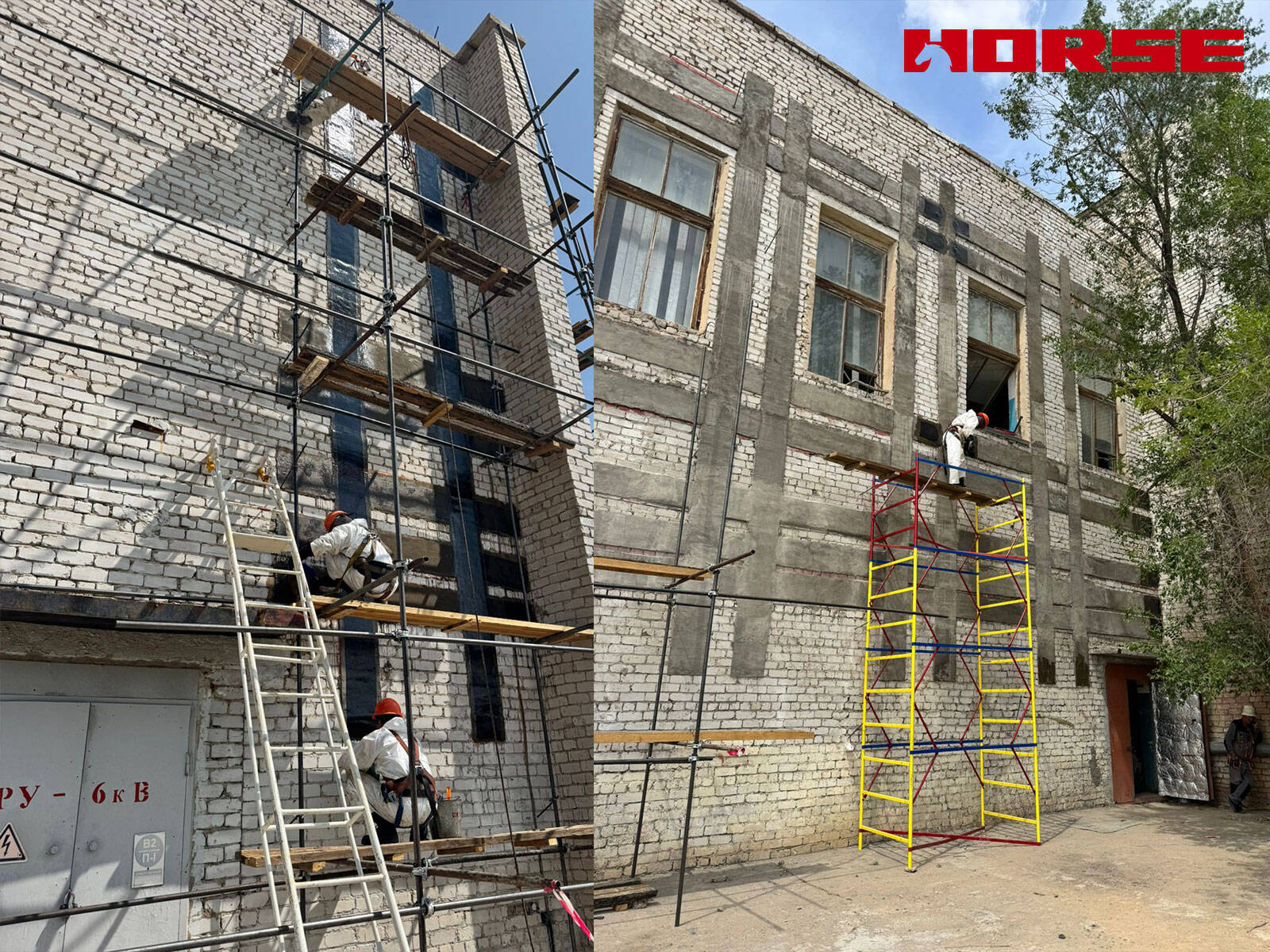
Concrete Walls: For "Shear + Compression Resistance," Combined Vertical/Horizontal Bonding.
The core function of a wall is to resist horizontal shear forces (such as earthquakes and wind loads) and bear vertical compressive forces. The direction of bonding depends on the wall type (load-bearing wall, shear wall).
Shear reinforcement (e.g., shear walls, seismic walls): Horizontal full-length or strip-type application.
Application Direction: The carbon fiber fabric fibers are aligned parallel to the horizontal direction of the wall (along the shear force direction). This supplements the wall's shear resistance, effectively adding horizontal shear reinforcement.
Application Range:
Full-Wall Application: Suitable for walls with insufficient shear resistance. Horizontal strips are 300-600mm wide and applied continuously from top to bottom (lap length ≥ 100mm).
Partial Application: Apply to cracked areas (e.g., on either side of door and window openings, at the wall ends), extending the application to 200-300mm on each side of the crack.
Compression Resistance/Opening Reinforcement (e.g., reinforcement after openings in load-bearing walls): Vertical + Circumferential Bonding
When a wall opening (e.g., a new pipeline opening) causes a localized decrease in bearing capacity:
Vertical Reinforcement: Attach vertical carbon cloth (with fibers running along the wall height) along both sides of the opening to compensate for the reduced vertical bearing capacity.
Circumferential Reinforcement: Attach a "circular" carbon cloth (with fibers running along the circumference) around the opening to create a restraint and prevent cracking at the edges.
Technical Tip: For large openings, attach a "horizontal batten" to the top of the opening to distribute the upper load.
You can find anything here you are in need of, have a trust trying on these products, you will find the big difference after that.
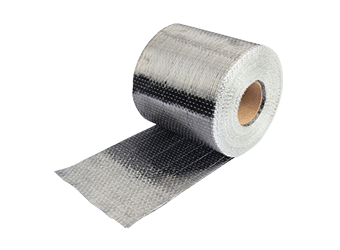
High strength, unidirectional carbon fiber wrap pre-saturated to form a carbon fiber reinforced polymer (CFRP) wrap used to strengthen structural concrete elements.
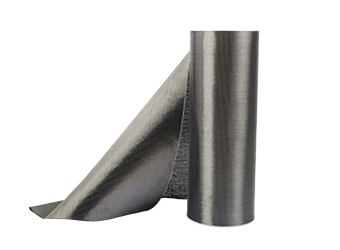
High strength, unidirectional carbon fiber fabric pre-saturated to form a carbon fiber reinforced polymer (CFRP) fabric used to strengthen structural concrete elements.
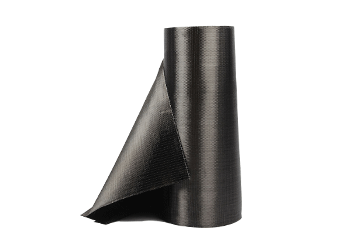
High strength, unidirectional carbon fiber sheet pre-saturated to form a carbon fiber reinforced polymer (CFRP) sheet used to strengthen structural concrete elements.